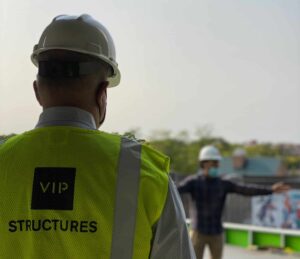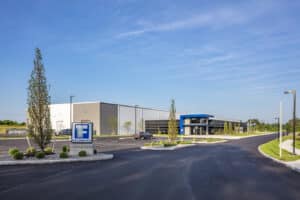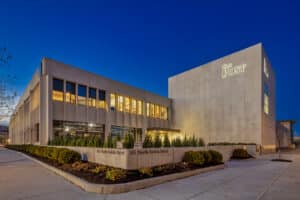The world of building construction may seem to outsiders like a world in which fundamental principles that have worked for so long still continue to function without much change. Buildings are designed, built and enjoyed. But clearly that’s just the surface of what’s happening in the fascinating world of architecture and construction, especially when it comes to the innovative materials being used and developed.
Not only do new materials allow architects to realize their visions, but buildings are crafted of materials designed for sustainability and durability to exist in a world where resources are precious. These new materials are making us all braver and more creative in what we design because they are stronger, more durable and more flexible. It’s also exciting to be able to envision works of art that stand with a greener footprint and can still enhance the lives of those that inhabit them.
Of course technology plays a big part in the materials coming to the forefront, as well as the fascination and reality of 3D printing of structures. All these innovations and advances in material science are essentially changing the scope of the construction and design industries as we know it. In these industries, change is a constant.
We’ve identified 7 new materials that pique our interests for their pure genius in applicability as well as their resourcefulness and sustainability. Here are a few of the building materials that are changing the construction landscape both figuratively and quite literally.
Pollution-Absorbing Bricks
The bricks are designed to be used as part of a structure’s typical ventilation system. Specialized bricks in a double-layer façade enclose an inner layer providing standard insulation. Heavy contaminated particulates are separated from the air via a filtration system and dropped into a removable hopper situated at the base of the wall. These special bricks can work passively or mechanically to deliver better air quality to a building’s inhabitants, reducing respiratory issues.
Green-Mix Concrete
This enhances the old stand-by material of concrete by mixing in recycled materials to improve its sustainability and eco-friendliness. Some of the mix-ins include recycled concrete aggregates, aluminum can fibers and fly ash. The new mix stands up to the old basic concrete in performance, yet costs less to use.
Enhanced Wood
Another fundamental component in the industry, wood, may also be getting an upgrade with the introduction of enhanced wood. University researchers have identified the molecular characteristics of xylan polymer (approximately one-third of wood’s structure), which has revealed new possibilities for the uses of plants in building materials. This will not only up the options for construction possibilities but will reduce costs and provide more options for renewable materials.
Hydroceramics
This could very well replace air conditioning in buildings. This new material is made of hydrogel bubbles that can naturally hold up to 400 times their volume in water. The bubbles then evaporate on hot days, significantly reducing the temperature in a given space. Utilizing hydroceramics in walls would be a significant step toward reducing energy consumption as well as helping to save money for the building’s owner.
Bioconcrete
This product has been developed with a formula that repairs itself. This not only makes aesthetic repairs on a crack in concrete, but also works to save structural integrity when water has passed through and corroded the reinforcing steel. With the use of bioconcrete engineers will be able to use less reinforcing steel on projects, reducing production costs as well as saving on repair costs when cracks appear.
Habito Drywall
This drywall is an innovative wallboard product that combines the benefits of old-fashioned plaster with modern drywall. Habito stands on its own, eliminating the need for fasteners and wall anchors for anything under 30 pounds. This high-density product provides great sound insulation and impact resistance, making it great for media rooms and high-traffic areas. Builders will appreciate the flexibility and performance of this new product as well as its durability for the building’s inhabitants.
Carbon-Fiber Balsa
This building material improves on balsa wood to further enhance its lightweight and rigid characteristics. Researchers have created cellular materials to replicate balsa which up until now had been costly and a challenge to produce. Utilizing fiber-reinforced thermosetting resins with 3D printing techniques, an alternate balsa can be created in epoxy materials. The honeycomb pattern created via the printing technique makes it suitable for precision structures as opposed to wood which presented problems due to its irregular grain patterns. This low-cost, durable carbon-fiber product could very well add to the diversity and flexibility of options that designers can present to their clients.
Today’s researchers and developers are quickly developing products that reduce carbon footprints and cut overall costs yet keep an eye on aesthetics. These all factor in when working on construction projects across Central New York and across the country. Teams at integrated design-build firms, like VIP Structures, stay up-to-date with the latest advanced materials and technological advancements that will take the construction industry to new levels of efficiency and effectiveness. It is now up to the architects and builders with vision to create those projects that are built to sustain the environment and the culture of the areas in which they work.



